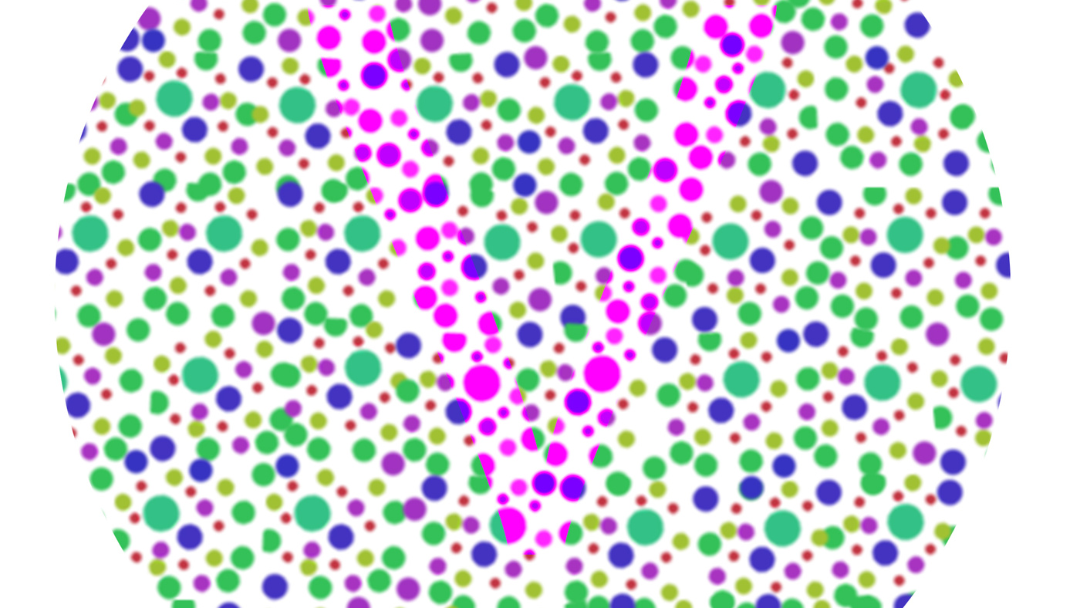True Colors: Understanding Color Blindness

Read time: 3 minutes
Unlocking the Mystery of Color Vision Deficiency
Color blindness is a common condition that affects millions of people worldwide. Despite its prevalence, there are many misconceptions surrounding color blindness. Here are some of the most common ones:
- Color blindness means you can't see any colors: This is not true. Color blindness refers to the inability to distinguish certain colors, but people with color blindness can still see many other colors.
- Only men can be color blind: While color blindness is more common in men than in women, it can affect both genders.
- Color blindness is rare: In fact, color blindness affects about 1 in 12 men and 1 in 200 women of Northern European descent.
- Color blindness means you can't see red and green: While red-green color blindness is the most common type, there are other types of color blindness as well, including blue-yellow and total color blindness.
- Color blindness is a disability: While color blindness can present challenges in certain professions, such as those that require color discrimination, it is not considered a disability.
- Glasses or contact lenses can cure color blindness: Unfortunately, there is no cure for color blindness. However, there are special glasses and contact lenses that can enhance color perception for some people.
- Color blindness only affects vision: Color blindness can also affect other aspects of life, such as identifying color-coded signals, maps, or warning lights.
If You Have Color Blindness...
It means that you see colors differently compared to most people. It can be challenging for you to distinguish certain colors.
Color blindness is often passed down in families. Unfortunately, there is no cure for it, but special glasses and contact lenses can help improve your color perception. Most people with color blindness can adjust to their condition and carry out everyday activities without major issues.
Types of color blindness include red-green color blindness, blue-yellow color blindness, and the rarest form of color blindness, complete color blindness, also known as monochromacy.
So, what are the symptoms of color blindness? Well, the main symptom is not seeing colors the same way as others do. If you have color blindness, you might struggle with:
- Differentiating between colors
- Judging the brightness of colors
- Recognizing different shades of colors
Sometimes, the symptoms of color blindness are so mild that you may not even notice them. Since we become accustomed to our own perception of colors, many people with color blindness are unaware that they have it.
In more severe cases of color blindness, additional symptoms can be present, like quick side-to-side eye movements (nystagmus) or sensitivity to light.
How Can You Find Out if You Have Color Blindness?
Our eye doctors here at Urban Optiks can perform a simple test to diagnose it. During the test, your eye doctor will show you a circle made up of various colored dots. Inside the circle, there will be a shape formed by dots, like a number, a letter, or a squiggly line. This shape is easy to see for people without color blindness, but if you have color blindness, you will struggle to perceive it. The image shown above is similar to an Ishihara chart used for testing color blindness.
Other tests your eye doctor might use are:
- Hue test: In this test, you'll be given blocks of different colors and asked to arrange them in rainbow order, from red to purple. If you struggle to put them in the correct order, it may indicate color blindness. Eye doctors often use this test for people who need precise color vision for their jobs, like photographers or designers.
- Anomaloscope test: This test checks if you can match the brightness of two lights. You will look into a device and adjust the lights using knobs to make them match. If you're unable to achieve a match, it could suggest color blindness.
Fortunately, there are tools and technologies available that can help people with color blindness. One such tool is the Color Blindness Simulator, which is a digital application that allows people to experience how different types of color blindness affect their vision. Additionally, some companies have developed color-correcting glasses that can help people with color blindness distinguish colors more easily.
Share this blog post on social or with a friend:
The information provided in this article is intended for general knowledge and educational purposes only and should not be construed as medical advice. It is strongly recommended to consult with an eye care professional for personalized recommendations and guidance regarding your individual needs and eye health concerns.
All of Urban Optiks Optometry's blog posts and articles contain information carefully curated from openly sourced materials available in the public domain. We strive to ensure the accuracy and relevance of the information provided. For a comprehensive understanding of our practices and to read our full disclosure statement, please click here.


















